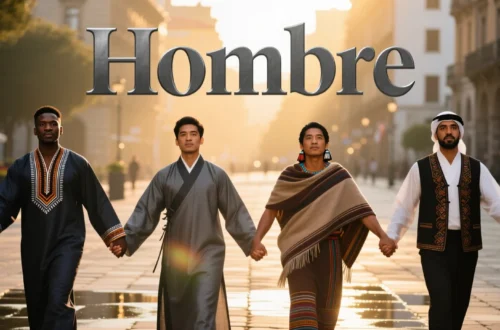Introduction
As a young student, I remember the thrill of mastering cursive, my pencil gliding across the page to form elegant loops and swirls. My teacher called it “writing with grace,” a skill that felt like unlocking a secret code. Across the world, cursive writing—whether in flowing Arabic calligraphy or the disciplined strokes of Chinese script—carries a unique charm, blending art with communication.
But how do different cultures name and practice this flowing style of writing? In this blog post, we’ll explore the word “cursive” in various languages, diving into its cultural significance and the universal beauty of handwritten expression that connects us all.
Reference Table: “Cursive” in 15 Languages
| Language | Word for “Cursive” | Cultural/Linguistic Insight |
|---|---|---|
| Spanish | Cursiva | Derived from Latin “cursus” (flow), used for connected handwriting in school curricula. |
| French | Cursive | Refers to fluid, joined-up writing, often taught as a hallmark of elegant penmanship. |
| German | Schreibschrift | Literally “writing script,” emphasizing its practical use in fluid handwriting. |
| Italian | Corsivo | Linked to artistic handwriting, often associated with Italy’s calligraphic traditions. |
| Mandarin | Liánbǐ | Means “connected strokes,” reflecting the fluid, artistic nature of Chinese calligraphy. |
| Hindi | Sanket Lipi | Translates to “indicative script,” used for flowing, handwritten Hindi styles. |
| Japanese | Renmen | Refers to connected writing, less common due to kanji’s structured nature but used in notes. |
| Korean | Pilche | Describes flowing handwriting, often tied to artistic expressions in Hangul script. |
| Arabic | Khatt | Refers to calligraphy, a revered art form blending spirituality and aesthetics. |
| Swahili | Mwandiko wa Kawaida | Means “ordinary writing,” used for joined-up styles taught in East African schools. |
| Zulu | Umbhalo Ohambisanayo | Translates to “flowing writing,” emphasizing smooth, connected strokes. |
| Yoruba | Ìkọwé Ìṣọ̀kan | Means “unified writing,” reflecting cursive’s role in fluid, expressive penmanship. |
| Maori | Tuhituhi Whakawhiti | Describes “crossing writing,” tied to flowing script in cultural storytelling. |
| Hawaiian | Kikokiko | Refers to continuous writing, often linked to handwritten Hawaiian texts. |
| Cherokee | Gadugi Tsalagi | Means “Cherokee writing,” used for flowing script in preserving cultural texts. |
European Languages: Elegance in Script
In Europe, the term for “cursive” reflects both practicality and artistry. For instance, in Spanish, “cursiva” comes from Latin “cursus” (flow), describing the smooth, connected handwriting taught in schools. Meanwhile, French uses “cursive” to denote fluid, joined-up writing, often seen as a mark of sophistication in personal letters. Additionally, German employs “Schreibschrift” (writing script), highlighting its functional role in everyday note-taking. Similarly, in Italian, “corsivo” evokes the artistic flair of handwriting, tied to Italy’s rich calligraphic heritage seen in Renaissance manuscripts. Thus, across Europe, cursive is both a practical skill and a nod to cultural elegance, shaped by each language’s approach to written expression.
Asian Languages: Art Meets Function
Asia’s diverse scripts give unique names to cursive. For example, in Mandarin, “liánbǐ” (connected strokes) reflects the fluid, brush-like flow of Chinese calligraphy, a revered art form. In contrast, Hindi uses “sanket lipi” (indicative script), describing flowing handwritten styles in Devanagari, often used in personal notes. Likewise, Japanese “renmen” (connected writing) is less common due to kanji’s structured nature but appears in casual handwriting. In Korean, “pilche” denotes flowing Hangul script, often used for artistic or expressive writing. Finally, in Arabic, spoken across over 20 countries like Saudi Arabia and Egypt, “khatt” refers to calligraphy, a sacred art blending spirituality and beauty. Clearly, in Asia, cursive bridges practical writing with cultural artistry.
African Languages: Flowing Traditions
In Africa, terms for “cursive” often tie to education and community. For instance, in Swahili, spoken in countries like Kenya and Tanzania, “mwandiko wa kawaida” (ordinary writing) describes joined-up handwriting taught in schools. Similarly, Zulu in South Africa uses “umbhalo ohambisanayo” (flowing writing), emphasizing smooth, connected strokes in educational settings. Meanwhile, Yoruba, common in Nigeria, uses “ìkọwé ìṣọ̀kan” (unified writing), reflecting cursive’s role in creating cohesive, expressive texts. Across over 20 African nations, cursive is a practical tool for learning, often carrying cultural weight in preserving oral stories through written script.
Indigenous & Island Languages: Cultural Expression
Indigenous and island languages offer distinct views on cursive. For example, in Maori, spoken in New Zealand, “tuhituhi whakawhiti” (crossing writing) describes flowing script used in cultural storytelling. In Hawaiian, “kikokiko” refers to continuous writing, often seen in handwritten texts preserving Hawaiian history. Similarly, Cherokee, spoken in parts of the U.S., uses “gadugi tsalagi” for flowing script, vital for documenting cultural narratives. In Samoan, spoken in Samoa, “tusi fa‘aauau” highlights continuous writing in community records. Across over 20 indigenous and island regions, from Polynesia to Native American lands, cursive serves as a tool for cultural preservation, blending artistry with tradition.
Cultural Insights: A Historical Flow
The concept of cursive has deep roots. In ancient Rome, “scriptura cursiva” was used for quick, connected writing on wax tablets. Meanwhile, in China, calligraphy evolved over 2,000 years, with flowing scripts like “caoshu” (grass script) prized for their beauty. Similarly, in medieval Islamic cultures, Arabic “khatt” became a spiritual art, adorning mosques and manuscripts. In African oral traditions, cursive styles emerged with literacy, aiding in recording griot stories. Over time, cursive has shifted from practical notation to an art form, yet its essence—fluid, human expression—remains universal across cultures.
Proverbs: Wisdom in Flow
Cursive inspires sayings that reflect its artistry:
- Chinese: “A brush’s flow reveals the heart’s truth.” This ties calligraphy to emotional expression.
- Arabic: “The pen’s dance honors the word.” This reflects calligraphy’s sacred role.
- Yoruba: “Flowing words bind the past to the future.” This emphasizes cursive’s role in heritage.
- Hawaiian: “The hand that writes smoothly carries the story forward.” This highlights cultural continuity.
These proverbs show cursive as a bridge between creativity and tradition.
FAQs
Why do terms for “cursive” sound similar in some languages?
Latin roots like “cursus” influence Romance languages (e.g., Spanish “cursiva,” Italian “corsivo”). Cultural exchanges, like Arabic’s spread, also create similarities.
What’s the oldest known use of cursive?
Roman “scriptura cursiva” (circa 1st century BCE) and Chinese “caoshu” (circa 200 BCE) are among the earliest, used for quick, flowing writing.
How do cultures differ in using cursive?
In Asia, cursive is often an art form (e.g., Arabic calligraphy). In Europe, it’s a practical skill taught in schools. Indigenous cultures use it to preserve oral traditions.
Conclusion
Whether it’s “liánbǐ” in China, “khatt” in Egypt, or “kikokiko” in Hawaii, the word “cursive” captures the beauty of flowing words. This art form, both practical and expressive, unites cultures in celebrating human creativity. What does cursive mean to you? Share your memories of learning to write in cursive or how it’s used in your language. Let’s honor the global art of flowing script together!





